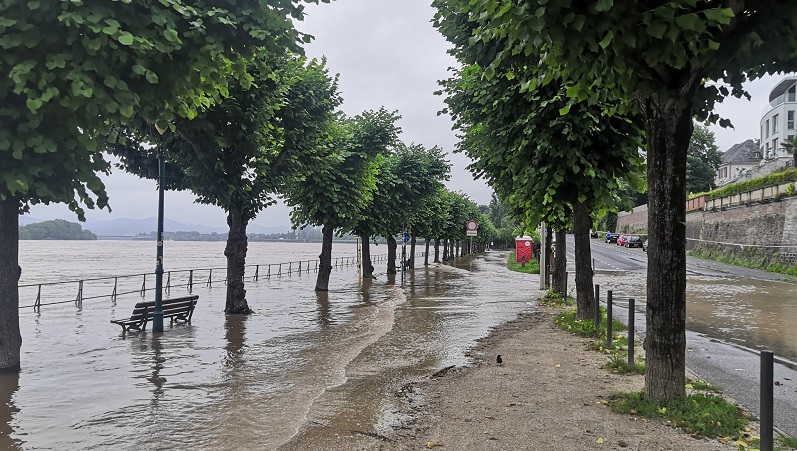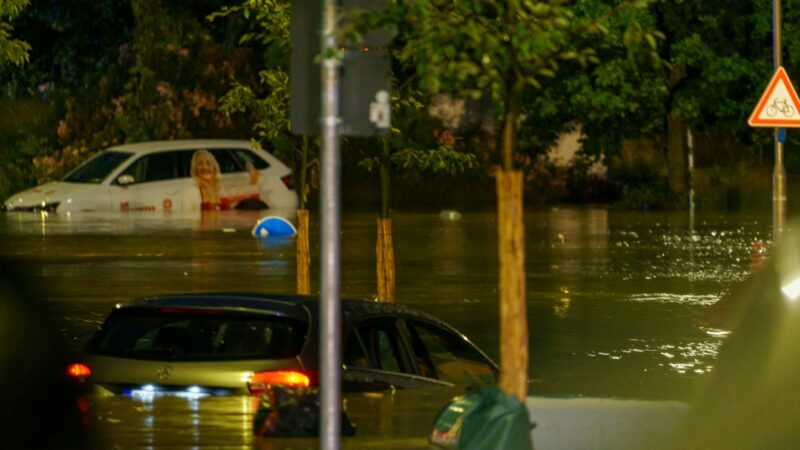Almost 200 people were killed and more than 700 were injured in catastrophic floods in Germany over the past week.
Heavy rainfall triggered severe flooding, landslides and sinkholes across western Germany, destroying houses and sweeping away cars. “The German language hardly knows any words for the devastation that has been caused here,” chancellor Angela Merkel said.
The government is facing mounting criticism that it was unprepared for the fatal floods. While the intense rainfall was forecast, many residents of affected areas did not get the message about how dangerous the impacts could be.
Michael Theurer, a member of the opposition centre-right Free Democrats Party, told German media that the death toll highlighted a “systemic failure” in the emergency response.
Ministers have played down the federal government’s responsibility for the disaster.
“It would be completely inconceivable for such a catastrophe to be managed centrally from any one place – you need local knowledge,” interior minister Horst Seehoffer said, rejecting the criticism.

The river Rhine burst its banks in Bonn, home to UN Climate Change headquarters (Photo: Ays Espiritu)
Climate scientists told Climate Home News that there was clearly a disconnect between the weather forecasts and the warnings communicated to residents in Germany.
“More than 100 fatalities in a flood is a fair sign of a failure. Authorities should have put in action plans to evacuate people who were in the path of the water, and individuals needed to know what to do to protect themselves,” said Hannah Cloke, professor of hydrology at the University of Reading, who set up and advises the European Flood Awareness System.
In many areas authorities acted in time, evacuating people, erecting temporary flood defences, and moving vehicles to higher ground, Cloke told Climate Home News.
“But if people did not hear the warnings, or failed to see the danger they or their communities were in, then the warning system has failed. It is like a smoke alarm in a fire that fails to go off because it has no batteries.”
Chileans look to new constitution to return water to communities
“There was some kind of breakdown in communication,” Hayley Fowler, professor of climate change impacts at Newcastle University, told Climate Home News.
“It’s shocking that so many people lost their lives in a developed western economy like Germany in this event which was well forecast. I hope that a much better system is put in place for warnings in the future,” she said, adding that in many countries it is unclear where the responsibility lies for dealing with severe flooding and other extreme weather events.
Roads, houses and bridges were unable to withstand the severe floods in Rhineland-Palatinate and North Rhine-Westphalia, two of the worst hit states.
“Our infrastructure appears unable to change as fast as the climate is changing. This is the crux of the problem. We need to create agility and flexibility in how we design, manage, finance, and govern infrastructure,” Mikhail Chester, environmental engineering professor at Arizona State University, told Climate Home News.
Examples of effective infrastructure built to withstand flooding include Kuala Lumpur’s Smart Tunnel, which doubles as a traffic and stormwater tunnel, and The Netherlands’ Room for the River programme which restores natural floodplains, he said.
Severe flooding in Meckenheim, near Bonn in Germany, on 14 July 2021 (Photo: Lars Lowinski/Twitter)
It is critical that governments incorporate climate risks, including increased rainfall and rising river levels, into planning regulations and infrastructure design, Fowler said. According to a recent review, efforts to do this remain in their infancy around the world.
One country that has adopted this mindset is the Netherlands, according to Fowler. The country’s southern provinces experienced extreme rainfall, but towns were not completely submerged and there were no fatalities.
“They have really thought about both climate change and preparing for flooding events. They have managed their systems so that they anticipate changes a decade ahead and ensure that they reduce the risk to the population from flooding,” Fowler said.
To increase their resilience to floods, countries could look to construct additional reservoirs and lakes upstream or natural flood management features, such as leaky dams, which slow down the flow of water. It is not as simple as raising the river banks, Fowler said. “If they do overtop, the flooding becomes more severe. You can only protect up to a point.”
